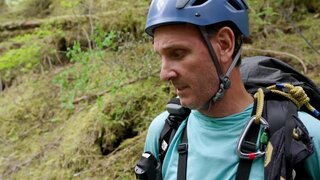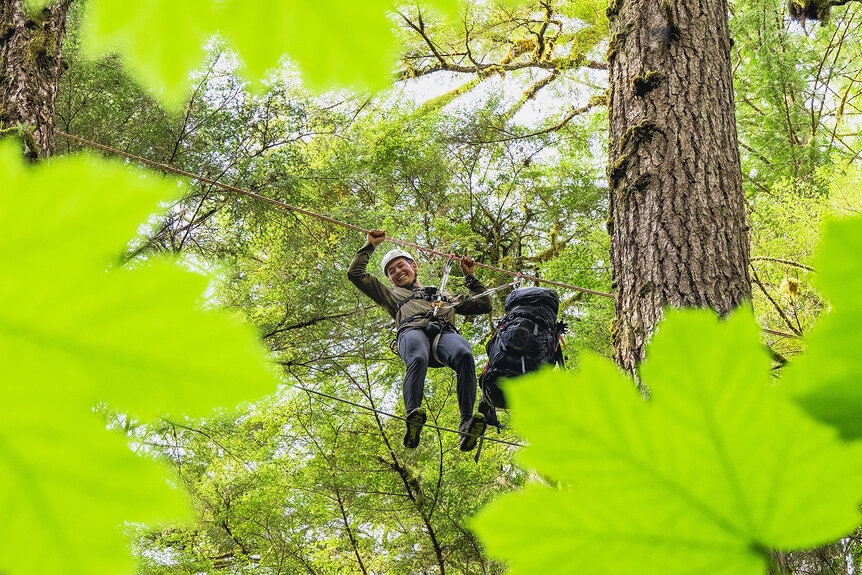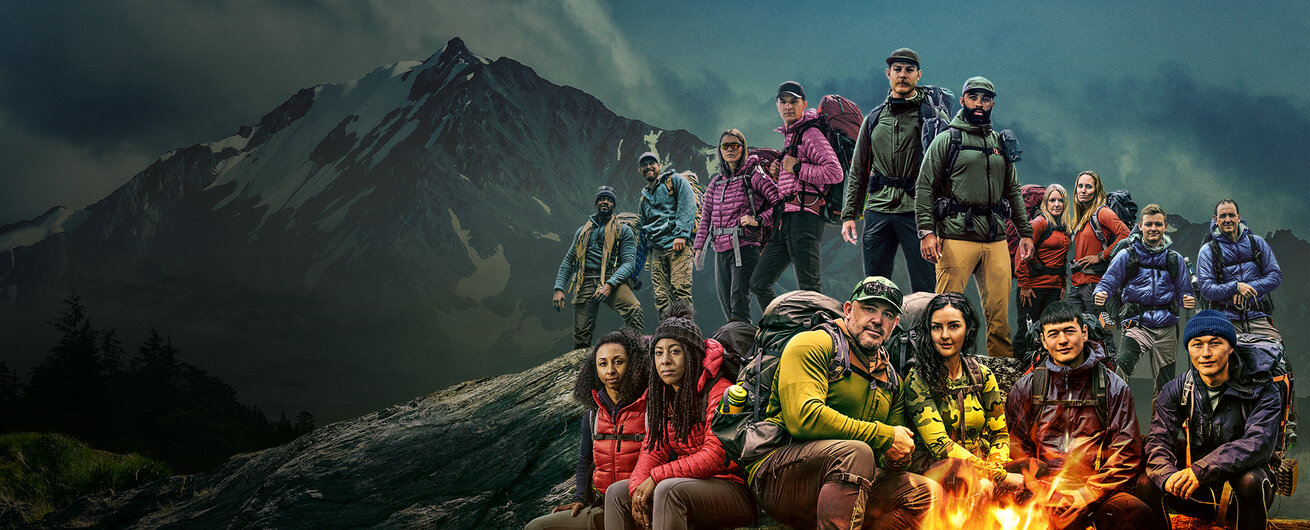Everything To Know About The Race To Survive: Alaska Adventure Challenges
Race To Survive: Alaska is a challenging competition made more difficult by the adventure obstacles in the racer's way.

As if the uncharted and inhospitable terrain on “Race To Survive: Alaska” wasn’t enough, each race sees the competitors have to tackle a brand new adventure challenge or two that’s standing between them, the end crate, and some much-needed rest at Survival Camp.
Those who have turned into the first few episodes likely noticed that, despite the teams having to use their navigation skills to get to the finish, all roads lead to these impossible-to-avoid and highly dangerous obstacles that are not for the faint of heart. Even in peak physical condition, these are challenging things for someone to do. However, by the time the contestants on “Race To Survive: Alaska” get there, they’re drained physically and mentally (and, let’s face it, starving).
To help viewers understand just how difficult the teams have it or to help would-be adventurers plan their next big stunt, we thought it would be helpful to compile a list of the challenges the show has set up so far.
The Trench
In Episode 5, the teams had to overcome their most natural obstacle yet, The Trench. They donned unique water-resistant suits that let them canyoner through a complex river gorge with razor-sharp rocks, dangerously cold water and waterfalls designed to make give them one last brutal punch to their bodies and spirit before reaching the next survival camp.
This leg of the race was perfectly positioned allowing for four teams all within ten minutes of each other motivation to push through this dangerous challenge as fast as they could. However, the 2-mile gauntlet of danger wasn’t over after they emerged on the other side. As Max and Christian noted, the cold water soaking their bodies and gear after a long day of hiking in high altitude made hypothermia a very real concern. Thanks to a brief repel down an icy waterfall, there was no way for any of the teams to avoid getting wet, which meant getting dry and warm immediately at survival camp had to take precedence over other goals like finding food.
Via Ferrata
Although maybe not the most dangerous of the competition, the Via Ferrata certainly gave even the most physically fit contestants a good, hearty workout. The name is Italian for “iron path” and earns its name with each treacherous step in Episode 4. Racers had to undergo a lateral climb along a sheer cliff face that, at its peak, towers four stories high. They had to traverse this slippery, unforgiving path for the length of two football fields.
Even pro teams like Oliver and Wilson as well as Max and Christian struggled on this one, with the Alaska brothers taking more than 25 minutes to complete it and the others more than 32. The challenge tested their otherwise unshakeable strength, endurance, and grit as they leashed themselves to cables and navigated natural foot and handholds to make their way to the other side of the slick rocks. While this would be challenging for even professional climbers like Genevive and Favia, the added 50-pound backpacks nearly eliminate the maneuverability that the climbers otherwise enjoy.
On the one hand, it’s good to get to this challenge first because the tide is as low as possible so the rocks are dry. On the other hand, that just means a potentially higher fall into the jagged rocks below.
Open Water Paddle
The second race of the competition was graced with two big adventure obstacles. After the cliff repels, teams had to make their way to a crate that looked like the finish line but was instead filled with pack rafts — inflatable kayaks that they had to assemble, load their gear into and board for a treacherous and exhausting fight to the finish.
Each team had to work together to paddle 10.7 miles to the end crate and survival camp with hardly any food in their system nor any energy left to do something so physically taxing. However, there was a lot of incentive to keep pushing. The competition up to that point had been about navigation and the ability to pace themselves on the harsh terrain. Once teams got out on the open water, though, it was an all-out sprint to gain placement over the other teams. Oliver and Wilson, Jeff and Hunter and Max and Christian were basically dueling the full 10.7 miles to try to earn first place.
Cliffside Repel
The second race was filled with adventure, but none was more dangerous than the multi-stage cliffside repel. Teams had no way of avoiding a massive cliff that they had to get to the bottom of in order to make it to the water. After scaling a massive mountain, there was no way down that would get them to the finish before the race clock ran out. So, producers set up ropes that allowed them to make a 525 ft descent. The path was straight down a jagged granite slope before they launched themselves the final 215 ft to the bottom.
While the ropes meant that no one was going to just fall without stopping, falling and getting injured in a place that’s hard to rescue someone from was a very real concern. Meanwhile, the physical toll the race up the mountain took became a real problem for Jeff as the mix of adrenaline and exhaustion led him to get sick halfway through before vomiting precious calories at the bottom of the mountain.
However, he still didn’t have it half as bad as the other teams who arrived at the obstacle late after a massive fog had rolled in over the cliff. Max and Christian commented that they could only see about 40 ft in front of them, which is a lot less than you’d like when careening straight down a cliff supported only by ropes.
2-Line Rope Bridge
After braving the hot sun and bushwacking their way through the wild in the first race, the teams all found themselves at a steep ravine below that would have been difficult to cross with their gear. Fortunately (or unfortunately depending on how you look at it) producers had set up a 2-line rope bridge that spanned the 230-foot gap across. Each team had to secure both themselves and their packs to the ropes and slowly make their way over the makeshift rope bridge.
While it may sound like just putting one foot in front of the other, when you’re looking down at a 60-foot drop into jagged rocks and running water, it’s suddenly a game that’s more mental than physical.
“Dude, if you fell, you’d be done,” Oliver remarks at one point as his brother, Wilson, hastily makes his way across.
Fortunately, everyone gets to the other side safely but the worst does indeed happen when Jeff attempts the obstacle. He loses his footing and falls. Luckily, he was able to keep one hand on the top rope and expertly pulled himself back up and finished the obstacle.
Tune into "Race To Survive: Alaska" Mondays at 11/10c on USA Network. The first two episodes are available on USA Network's YouTube channel. Catch more survival shows on Peacock now.




